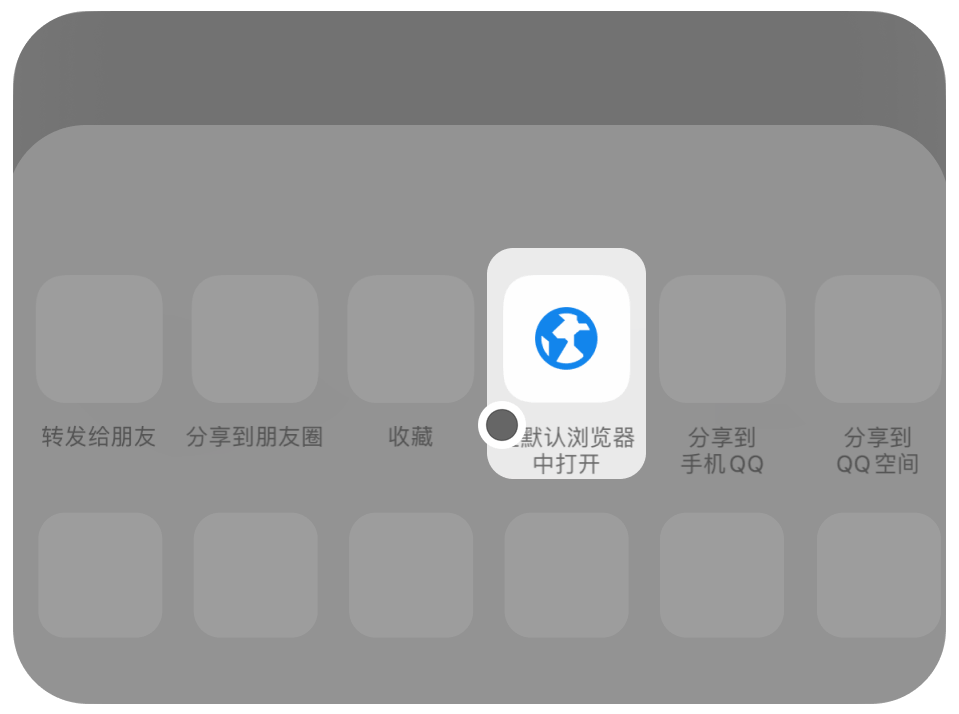你知道 Android 是如何管理复杂的 Window 层级的?
- TechMerger
2022-10-17 16:13
App 开发者的不知有没有发现,StatusBar 一直是盖在 App 上面,不管是修改颜色,或者是写悬浮框,都无法盖住 StatusBar。
framework 开发,会出现一些定制,如盖住 StatusBar,不了解的可能用错,出现一些不必要的 bug,官方文档也没有列出 Window 层级的规则。
所以希望通过下文给大家分享,Android 是如何制定显示层级规则的。
大概说下 Window 在 Android 中的概念
其实也可以好理解,和经常使用 Windows 操作系统一样,打开一个应用,出现界面,我们可以理解出现了一个窗口,所以 Window ≠ View。
一个 Activity 可以理解 对应一个 Window,理解源码的同学知道:ViewRootImpl 是对应一个 Window。
怎么看 Window 呢?
adb shell dumpsys window抽取了几个典型的Window如下:Window #2 Window{911875c u0 NavigationBar0}://导航栏 ty=NAVIGATION_BAR isOnScreen=true isVisible=trueWindow #4 Window{bf1a956 u0 StatusBar}://状态栏 ty=STATUS_BAR isOnScreen=true isVisible=trueWindow #11 Window{d377ae1 u0 InputMethod}://输入法,不显示 ty=INPUT_METHOD isOnScreen=false isVisible=falseWindow #12 Window{e190206 u0 com.android.settings/com.android.settings.Settings}://打开 App activity ty=BASE_LICATION isOnScreen=true isVisible=trueWindow #16 Window{abcabb9 u0 com.android.systemui.ImageWallpaper}://壁纸 ty=WALLPAPER isOnScreen=false isVisible=false一般手机都会存在以上 Window,层级顺序从高 -> 低。
显示 PopWindow
Window #11 Window{513f711 u0 PopupWindow:3e4bfb}: ty=LICATION_SUB_PANEL isOnScreen=true sVisible=true显示 Dialog
Window #11 Window{a08f90b }: ty=LICATION isOnScreen=true isVisible=true不难看出,Window 层级与 ty 有关系的,ty 是 type 的简写。
Window 的分类
Application Window:应用程序窗口
type 取值范围 [1,99]
/** * Start of window types that represent normal lication windows. */public static final int FIRST_LICATION_WINDOW = 1;// activity 会使用 此 typepublic static final int TYPE_BASE_LICATION = 1;// dialog 会使用 此 typepublic static final int TYPE_LICATION = 2;// 冷启动会显示的 Window,真正启动页面显示之前的画面public static final int TYPE_LICATION_STARTING = 3;// 没玩过public static final int TYPE_DRAWN_LICATION = 4;/** * End of types of lication windows. */public static final int LAST_LICATION_WINDOW = 99;
Sub Window:子窗口
子窗口:顾名思义,对应有主窗口。子窗口需要附在主窗口上,如 PopWindow
type 取值范围 [1000,1999]
/** * Start of types of sub-windows. The {@link #token} of these windows * must be set to the window they are attached to. These types of * windows are kept next to their attached window in Z-order, and their * coordinate space is relative to their attached window. */public static final int FIRST_SUB_WINDOW = 1000;public static final int TYPE_LICATION_PANEL = FIRST_SUB_WINDOW;public static final int TYPE_LICATION_MEDIA = FIRST_SUB_WINDOW + 1;public static final int TYPE_LICATION_SUB_PANEL = FIRST_SUB_WINDOW + 2;public static final int TYPE_LICATION_ATTACHED_DIALOG = FIRST_SUB_WINDOW + 3;public static final int TYPE_LICATION_MEDIA_OVERLAY = FIRST_SUB_WINDOW + 4;public static final int TYPE_LICATION_ABOVE_SUB_PANEL = FIRST_SUB_WINDOW + 5;/** * End of types of sub-windows. */public static final int LAST_SUB_WINDOW = 1999;System Window :系统窗口
type 取值范围 [2000,2999]
如 Toast,ANR 窗口,输入法,StatusBar,NavigationBar 等。
/** * Start of system-specific window types. These are not normally * created by lications. */public static final int FIRST_SYSTEM_WINDOW = 2000;public static final int TYPE_STATUS_BAR = FIRST_SYSTEM_WINDOW;public static final int TYPE_SEARCH_BAR = FIRST_SYSTEM_WINDOW+1;public static final int TYPE_PHONE = FIRST_SYSTEM_WINDOW+2;/** * End of types of system windows. */public static final int LAST_SYSTEM_WINDOW = 2999;
之前好像看过文章说 type 值越大,层级越高, 这个观点是错的。
具体层级是下面逻辑代码,返回值越大,层级越高,最终在屏幕上显示时就越靠近用户。
frameworks/base/services/core/java/com/android/server/policy/WindowManagerPolicy.java/** * Returns the layer assignment for the window type. Allows you to control how different * kinds of windows are ordered on-screen. * * @param type The type of window being assigned. * @param canAddInternalSystemWindow If the owner window associated with the type we are * evaluating can add internal system windows. I.e they have * {@link Manifest.permission#INTERNAL_SYSTEM_WINDOW}. If true, alert window * types {@link android.view.WindowManager.LayoutParams#isSystemAlertWindowType(int)} * can be assigned layers greater than the layer for * {@link android.view.WindowManager.LayoutParams#TYPE_LICATION_OVERLAY} Else, their * layers would be lesser. * @param roundedCornerOverlay {#code true} to indicate that the owner window is rounded corner * overlay. * @return int An arbitrary integer used to order windows, with lower numbers below higher ones. */default int getWindowLayerFromTypeLw(int type, boolean canAddInternalSystemWindow, boolean roundedCornerOverlay) { // Always put the rounded corner layer to the top most. if (roundedCornerOverlay && canAddInternalSystemWindow) { return getMaxWindowLayer(); } if (type >= FIRST_LICATION_WINDOW && type <= LAST_LICATION_WINDOW) { return LICATION_LAYER;// LICATION_LAYER = 2 } switch (type) { case TYPE_WALLPAPER: // wallpaper is at the bottom, though the window manager may move it. return 1; case TYPE_PRESENTATION: case TYPE_PRIVATE_PRESENTATION: case TYPE_DOCK_DIVIDER: case TYPE_QS_DIALOG: case TYPE_PHONE: return 3; case TYPE_SEARCH_BAR: case TYPE_VOICE_INTERACTION_STARTING: return 4; case TYPE_VOICE_INTERACTION: // voice interaction layer is almost immediately above s. return 5; case TYPE_INPUT_CONSUMER: return 6; case TYPE_SYSTEM_DIALOG: return 7; case TYPE_TOAST: // toasts and the plugged-in battery thing return 8; case TYPE_PRIORITY_PHONE: // SIM errors and unlock. Not sure if this really should be in a high layer. return 9; case TYPE_SYSTEM_ALERT: // like the ANR / crashed dialogs // Type is deprecated for non-system s. For system s, this type should be // in a higher layer than TYPE_LICATION_OVERLAY. return canAddInternalSystemWindow ? 13 : 10; case TYPE_LICATION_OVERLAY: return 12; case TYPE_INPUT_METHOD: // on-screen keyboards and other such input method user interfaces go here. return 15; case TYPE_INPUT_METHOD_DIALOG: // on-screen keyboards and other such input method user interfaces go here. return 16; case TYPE_STATUS_BAR: return 17; case TYPE_STATUS_BAR_ADDITIONAL: return 18; case TYPE_NOTIFICATION_SHADE: return 19; case TYPE_STATUS_BAR_SUB_PANEL: return 20; case TYPE_KEYGUARD_DIALOG: return 21; case TYPE_VOLUME_OVERLAY: // the on-screen volume indicator and controller shown when the user // changes the device volume return 22; case TYPE_SYSTEM_OVERLAY: // the on-screen volume indicator and controller shown when the user // changes the device volume return canAddInternalSystemWindow ? 23 : 11; case TYPE_NAVIGATION_BAR: // the navigation bar, if available, shows atop most things return 24; case TYPE_NAVIGATION_BAR_PANEL: // some panels (e.g. search) need to show on top of the navigation bar return 25; case TYPE_SCREENSHOT: // screenshot selection layer shouldn't go above system error, but it should cover // navigation bars at the very least. return 26; case TYPE_SYSTEM_ERROR: // system-level error dialogs return canAddInternalSystemWindow ? 27 : 10; case TYPE_MAGNIFICATION_OVERLAY: // used to highlight the magnified portion of a display return 28; case TYPE_DISPLAY_OVERLAY: // used to simulate secondary display devices return 29; case TYPE_DRAG: // the drag layer: input for drag-and-drop is associated with this window, // which sits above all other focusable windows return 30; case TYPE_ACCESSIBILITY_OVERLAY: // overlay put by accessibility services to intercept user interaction return 31; case TYPE_ACCESSIBILITY_MAGNIFICATION_OVERLAY: return 32; case TYPE_SECURE_SYSTEM_OVERLAY: return 33; case TYPE_BOOT_PROGRESS: return 34; case TYPE_POINTER: // the (mouse) pointer layer return 35; default: Slog.e("WindowManager", "Unknown window type: " + type); return 3; }}以上方法,返回 layer,type -> layer,以上代码可以得到如下信息。
layer 取值范围 【1,36】
App 对应 APPLICATION_LAYER,值为 2,仅比 TYPE_WALLPAPER 大
Window 层级具体是怎么计算的呢?
从 System Window 中 基本已经找到答案。本章节具体说下实现细节:
mBaseLayer & mSubLayer
用来计算层级的两个参数
mSubLayer:用来计算子窗口的层级,默认值为 0
mBaseLayer:用来计算主窗口的层级。
frameworks/base/services/core/java/com/android/server/wm/WindowState.javaif mAttrs.type = FIRST_SUB_WINDOW && mAttrs.type = LAST_SUB_WINDOW { mBaseLayer = mPolicy.getWindowLayerLw(parentWindow) * TYPE_LAYER_MULTIPLIER + TYPE_LAYER_OFFSET;// layer * 10000 + 1000 mSubLayer = mPolicy.getSubWindowLayerFromTypeLw(a.type);} else { mBaseLayer = mPolicy.getWindowLayerLw(this) * TYPE_LAYER_MULTIPLIER + TYPE_LAYER_OFFSET;// layer * 10000 + 1000 mSubLayer = 0;}WindowState 中 mBaseLayer,mSubLayer
mBaseLayer:主窗口的 type 对应 value ,计算如下
如 Activity,type 是 TYPE_BASE_APPLICATION ,getWindowLayerLw 计算返回 APPLICATION_LAYER(2),mBaseLayer = 2 * 10000 + 1000
TYPE_LAYER_MULTIPLIER:为什么要 * 10000,将阈值扩大 10000 倍,系统中可能存在相同类型的窗口有很多。
TYPE_LAYER_OFFSET:为了移动同一层级的一组窗口
以上两个常量具体怎么使用,没有研究,该值不影响本文的分析。
mSubLayer:计算规则如下,取值范围 [-2,3],TYPE_APPLICATION_ATTACHED_DIALOG 值为 1,APPLICATION_MEDIA_SUBLAYER 值为 -2,看到这里就可以想到子窗口是可以在主窗口下方,主窗口如果可以看到子窗口,必须透明。
frameworks/base/services/core/java/com/android/server/policy/WindowManagerPolicy.javadefault int getSubWindowLayerFromTypeLw(int type) { switch (type) { case TYPE_LICATION_PANEL: case TYPE_LICATION_ATTACHED_DIALOG: return LICATION_PANEL_SUBLAYER;// 1 case TYPE_LICATION_MEDIA: return LICATION_MEDIA_SUBLAYER;// -2 case TYPE_LICATION_MEDIA_OVERLAY: return LICATION_MEDIA_OVERLAY_SUBLAYER;// -1 case TYPE_LICATION_SUB_PANEL: return LICATION_SUB_PANEL_SUBLAYER; // 2 case TYPE_LICATION_ABOVE_SUB_PANEL: return LICATION_ABOVE_SUB_PANEL_SUBLAYER;// 3 } Slog.e("WindowManager", "Unknown sub-window type: " + type); return 0;}Sub Window 排序
frameworks/base/services/core/java/com/android/server/wm/WindowState.java/** * Compares two window sub-layers and returns -1 if the first is lesser than the second in terms * of z-order and 1 otherwise. */private static final Comparator<WindowState> sWindowSubLayerComparator = new Comparator<WindowState>() { @Override public int compare(WindowState w1, WindowState w2) { final int layer1 = w1.mSubLayer; final int layer2 = w2.mSubLayer; if (layer1 < layer2 || (layer1 == layer2 && layer2 < 0 )) { // We insert the child window into the list ordered by // the sub-layer. For same sub-layers, the negative one // should go below others; the positive one should go // above others. return -1; } return 1; }; };根据上文 mSubLayer 的值排序,如果是新插入的 window ,如果 sublayer 相等且为负值,放在下方,如果 sublayer 相等且为正值,放在上方。
主 Window 排序
frameworks/base/services/core/java/com/android/server/wm/WindowToken.java/** * Compares two child window of this token and returns -1 if the first is lesser than the * second in terms of z-order and 1 otherwise. */private final Comparator<WindowState> mWindowComparator = (WindowState newWindow, WindowState existingWindow) -> { final WindowToken token = WindowToken.this; if (newWindow.mToken != token) { throw new IllegalArgumentException("newWindow=" + newWindow + " is not a child of token=" + token); } if (existingWindow.mToken != token) { throw new IllegalArgumentException("existingWindow=" + existingWindow + " is not a child of token=" + token); } return isFirstChildWindowGreaterThanSecond(newWindow, existingWindow) ? 1 : -1;};protected boolean isFirstChildWindowGreaterThanSecond(WindowState newWindow, WindowState existingWindow) { // New window is considered greater if it has a higher or equal base layer. return newWindow.mBaseLayer >= existingWindow.mBaseLayer;}与 Sub Window 排序类似,按照 mBaseLayer 大小排序,如果是新插入的,且相等,放在上方。
总结
主 window 排序图示
子 window 排序图示
本文来自微信公众号:TechMerger (ID:ELC-XTLS-QSW),作者:Jingle Zhang
广告声明:文内含有的对外跳转链接(包括不限于超链接、二维码、口令等形式),用于传递更多信息,节省甄选时间,结果仅供参考,IT之家所有文章均包含本声明。








